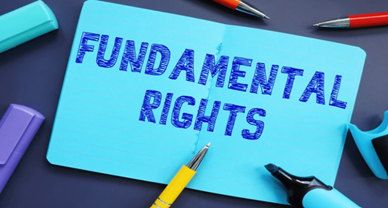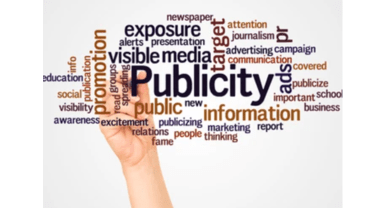Digital Access as a Fundamental Right
A two-judge bench of the Supreme Court, comprising J.B. Pardiwala and R. Mahadevan, JJ., on April 30th, 2025, ruled that digital access is a fundamental right under the Constitution of India. Hearing two Public Interest Litigations (PILs), Pragya Prosun v. Union of India and Amar Jain v. Union of India[1], the bench said that inclusive digital ecosystems were not just a matter of policy but a constitutional imperative.[2] The PILs challenged the existing digital KYC procedures for being discriminatory against differently abled persons and violative of the rights of the aggrieved under the Rights of Persons with Disabilities Act, 2016[3] (RPwD Act).[4] Progya Prasun was filed by an acid attack survivor with facial disfigurement, unable to complete the e-KYC procedure to open a bank account that includes blinking for a live photo. Amar Jain was filed by a visually impaired advocate who encountered barriers in completing the e-KYC procedures, which included handling OTPs and taking self-portraits. The Court directed various measures to tackle the problems faced by the differently abled. These directions will make the digital landscape more inclusive and accommodating of differently abled persons, senior citizens, rural populations, marginalized groups, etc., whose access to banks and telecom services is hindered due to current procedures.[5] The court issued 20 directions to the government to make KYC procedures more accessible.
Courts’ observations and directions
The Supreme Court, in its decision, issued a series of directions to combat the abnormalities or roadblocks faced by the differently abled while accessing digital services. This comes forward as a step by the Court in ensuring fairness, access, and inclusivity to services and programmes in a digital age. The directives include, but are not limited to:
(i) Mandate for revision of the procedure and e-KYC Norms. Regulatory bodies such as the Reserve Bank of India and others should revise and formulate inclusive measures and accommodate the differently abled.
This would remove the roadblock faced by persons with visual impairments or facial disfigurements.
(ii) Extension of OTP durations to accommodate individuals with visual impairments.
This would be a blessing for the elderly or people who are not digitally literate.
(iii) Alternate verification methods to be developed for the KYC process. This would act as an inclusive replacement for verifying “liveness” as required in these procedures.[6] Manual verification, paper-based KYC, and voice-based authentication can be an alternative.
(iv) Government portals and other service platforms to comply with the Web Content Accessibility Guidelines (WCAG).
(v) Support to be provided in regional languages.
This would be a big help for people who are versed only in a regional language or belong to linguistic minority groups. Given that most platforms have a display language of English or Hindi, this would facilitate access to people of linguistic minorities.
(vi) Training bank and government personnel in assisting the differently abled.
(vii) Nodal officers to be appointed to check compliance with digital accessibility requirements.
(viii) Certified professionals to conduct regular audits to ensure that accessibility standards are met.
Constitutional Aspects
Changing times and the technology boom have led to administrative processes switching to a virtual mode. This shift will make life difficult for people who are bereft of access to the internet or are digitally illiterate. The Supreme Court in Anuradha Bhasin v. Union of India[7], declared the right to the internet as a fundamental right under the ambit of freedom of speech and expression provided under Article 19 of the Constitution. The Court in the current decision has expanded the ambit of Article 21 of the Constitution to include the right to digital access under the provisions of the right to life and personal liberty.

Given that many essential and government services have shifted to digital platforms[8], access becomes an important step towards availing these services and improving the ease of life. The directives and the right can be extended to services such as education, healthcare, and finance, accessed digitally.[9] With this in mind, the scope of the fundamental right to life and personal liberty under Article 21 has been reinterpreted and widened. The State has an obligation under the Constitution to ensure equality before the law for citizens and prohibit discrimination under Articles 14 and 15 of Part III. Article 38 of the Directive Principles of State Policy mandates the promotion of welfare and the reduction of inequalities. These provisions in the Constitution place an obligation on the State to ensure that the digital services and infrastructure are accessible to everyone, including the differently abled, on lines of substantive equality, building an equitable and inclusive digital landscape.[10]
Previously, the Supreme Court in Rajive Raturi v. Union of India[11] recognised the right to access services and opportunities as a fundamental right part of Article 21, and in Vikash Kumar v. Union Public Service Commission[12] mandated reasonable accommodations for the differently abled.[13]
Implications and Challenges
In light of the directive, the Government and other service providers, including private establishments, will have to make their digital platforms conform to the decision. Adopting these directives would mean redesigning portals and training personnel to be versed in the new standards. This would benefit the differently abled, senior citizens, the rural population, marginalized groups, and linguistic minorities.[14] Given that digital access has been confirmed as a constitutional right, internet shutdowns and censorship would be dealt with more scrutiny in the future, as a violation of a constitutional and fundamental right. Decisions to curtail or restrict internet connectivity will have to meet the tests of legality, necessity, and proportionality laid down in Anuradha Bhasin.
The implementation of the directives is not without hurdles. Government portals might face a technological barrier, as many services currently fail to comply with the directives and standards set by the court. This would require a significant revamp, which needs to be backed by significant funding for the systems and services across the country.
Steps towards improving digital literacy must be taken to prepare and aid our citizens in a digital age. This would include facilitating and introducing these citizens to the digital system with assistance provided by appointed personnel. Systems in various languages can be introduced to make access for linguistic minorities easier. Audio-visual content and braille can be introduced to facilitate the needs of the deaf and blind. The directions of the Supreme Court can be solidified by a law by the Parliament, pertaining to Digital Access and Digital Rights. The RPwD Act needs to be implemented without inconsistencies across sectors, implementing inclusive infrastructure, installing signage in public spaces in multiple languages and formats, including audio-visual and braille, to ensure access and digital literacy.[15]
Author:– T H Suhail, in case of any queries please contact/write back to us at support@ipandlegalfilings.com or IP & Legal Filing.
[1] Pragya Prosun v. Union of India and Amar Jain v. Union of India, 2025 SCC OnLine SC 993.
[2] Krishnadas Rajagopal, Digital access a part of fundamental right to life and liberty: Supreme Court, The Hindu (May 1, 2025, 02:19 AM IST), https://www.thehindu.com/news/national/sc-upholds-inclusive-digital-access-as-a-part-of-fundamental-right-to-life/article69508394.ece.
[3] The Rights of Persons with Disabilities Act, 2016, No. 49, Acts of Parliament, 2016 (India)
[4] Insights Editor, UPSC Editorial Analysis: Supreme Court’s recognition of Digital Access as a Fundamental Right, Insights IAS (May 7, 2025), https://www.insightsonindia.com/2025/05/07/upsc-editorial-analysis-supreme-courts-recognition-of-digital-access-as-a-fundamental-right/.
[5] Supreme Court Declares Digital Access a Fundamental Right Under Article 21, Vajiram & Ravi (May 1, 2025, 10:15 AM IST), https://vajiramandravi.com/upsc-daily-current-affairs/mains-articles/supreme-court-declares-digital-access-a-fundamental-right-under-article-21/.
[6] Id.
[7] Anuradha Bhasin v. Union of India, 2019 SCC OnLine SC 1725.
[8] Abhishek De, Supreme Court recognises right to digital access in landmark verdict, India Today (Apr. 30, 2025), https://www.indiatoday.in/india/law-news/story/digital-access-fundamental-right-supreme-court-kyc-disabled-acid-attack-victims-2717295-2025-04-30.
[9] Vajiram and Ravi, supra note 5.
[10] Digital Access as a Part of the Fundamental Right to Life and Liberty, Drishti IAS (May 1, 2025), https://www.drishtiias.com/daily-updates/daily-news-analysis/digital-access-as-a-part-of-the-fundamental-right-to-life-and-liberty.
[11] Rajive Raturi v. Union of India, 2017 SCC OnLine SC 1491.
[12] Vikash Kumar v. Union Public Service Commission, 2021 SCC OnLine SC 84.
[13] Insights Editor, supra note 4.
[14] Amit Anand Choudhary, Digital access part of fundamental right to life and liberty, says SC, The Times of India (May 1, 2025 02:35 IST), https://timesofindia.indiatimes.com/india/digital-access-part-of-fundamental-right-to-life-and-liberty-says-sc/articleshow/120776594.cms.
[15] Krishnadas Rajagopal, supra note 2.


